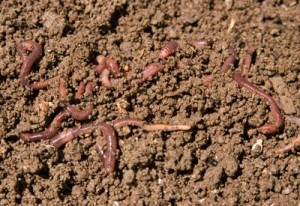The past months have seen Jeff and I revisiting the GNOWFGLINS’ terms. We redid our What are GNOWFGLINS? page on this site – and you should visit it to refresh yourself on what GNOWFGLINS means.
Today, I’d like to talk about two of those terms – natural and organic. They’re worth addressing here. First, because we drastically updated them. But second, and most importantly, because they depart greatly from the (lacking) conventional definitions.
Natural
Do you know what “natural” means in the food marketplace? It doesn’t mean much – other than that a processed food is free of “artificial” ingredients. You’ll see this label on a box of bleached white flour crackers or pasta. You might see it because a company uses white sugar instead artificial sweeteners. There are certain food products, which, as a direct result of intensive processing, contain free glutamic acid (MSG), yet the manufacturers call the processed food natural because the free glutamic acid is naturally occurring in other foods (though not nearly in the same quantity, and not as a by-product of intensive processing). Then there are “natural” meat and poultry products, which are minimally processed without adding artificial ingredients, such as flavors, colors and preservatives.
You can see there is much leeway with the “natural” label. On the other hand, when I say natural at traditionalcookingschool.com, I mean something much more specific.
Natural. Picture a garden. A diverse population of organisms – big and small, young and old, plant and animal – living together, sharing resources and each contributing to the health of the community. From the richest soil to the tallest tree and all life in between, nothing is neglected. The waste of one serves the needs of another. Without the one, the rest suffer. All for one and one for all. Natural foods thrive in these rich and diverse ecosystems.
The rich and diverse ecosystem which we call natural allows plants and animals to thrive and be nourished.
Truly naturally-raised chickens peck at insects and seeds in a pasture. Their work helps break down manure so it can enrich the pasture, and it also keeps the parasite load down for the grazing herbivores. The chickens’ high-quality diet makes their eggs and their meat healthy for us. They are happy and healthy – thriving. Their work supports the health of the farm ecosystem, and the rest of the farm’s processes uphold the health of the chickens and their eggs and meat.
Marketplace “natural” chickens could be raised in a crowded factory farm, where the chickens rarely see the light of day, live in crowded conditions thick with the putrid aroma of their urine, eat only vegetarian feed, and are given medications (rather than a healthy environment) to keep them back from the brink of disease or death.
Which chicken would you rather eat – the marketplace “natural” chicken or the truly natural chicken?
If you follow the traditionalcookingschool.com definition of natural, you will find superior, healthy food to support your health and the health of the land and other organisms sharing it. I can think of only two ways to gather truly natural food:
- know your farmer – buy from a local grower whose truly natural methods are known to you
- grow your own – follow natural growing methods that encourage a rich and diverse ecosystem
Organic
Now, what is the conventional definition of “organic”?
There are various organic certifying agencies. At the most minimum level, we have the USDA. Then other agencies up the standards from there. But, most of the organic food products you see in the store are USDA organic certified organic. So let’s talk about this minimum level of certification.
According to the USDA, plant foods that receive the “organic” label are “foods that were produced without the use of chemical fertilizers, pesticides, or other artificial agents.” USDA organic animals – which provide organic meat, poultry, dairy and eggs – must eat only “organic” vegetarian feed; must not be given any antibiotics or growth hormones; and must have “access” to pasture.
These “organic” standards merely ensure that no manufactured inputs are given to that animal, but they should go much further to ensure truly organic food.
When we say organic, our meaning is more like the true dictionary definition of organic (“of, relating to, or derived from living matter”).
Organic. Think of life. All life springs from the soil, and to it returns on its dying day. A healthy soil teams with billions of microorganisms, fungi and invertebrates – all cooperating to support the cycle of life. The soil community dissolves minerals stored in rocks, liberates nutrients trapped in decaying matter, and converts these energy sources into forms most easily assimilated by all other creatures. A dead soil is devoid of life. It is nothing more than rocks, sand and clay. And nothing good comes from a dead soil. Organic foods come from living soil.
Let’s have another example: tomatoes. (Now some of this is going to overlap with our definition of natural, but we’ll find that again and again with food. Everything is interwined – and that’s good!)
A truly organic tomato plant would be grown by a farmer who focuses on soil health – he wants to build a soil that is rich with microorganisms that do the important work of breaking down decaying matter into easily assimilated nutrients for the tomato plant and the fruit it bears. It would be grown with companion plants, and in the presence of beneficial insects. All the time the farmer would be feeding the soil with more and more organic matter, to feed the mircoorganisms which in turn feed the plant and which over time, constantly improves the quality of the soil. This tomato plant would produce tomatoes that are picked when ripe on the vine, when the tomato is juicy with unparalleled flavor.
On the other hand, a USDA “organic” tomato could be grown by a farmer who is less interested in building living soil, and more interested in getting a tomato intact to the market. Because it would be against the guidelines, the grower does not put chemical fertilizers on the tomato plant – and that’s good. They may add non-chemical organic inputs to the soil to make it somewhat nourishing. Yet, because the soil could lack a rich depth of organic matter, its microorganism population would be fledgling at best, and therefore the plant would lack deep nourishment and may not produce primely nutritious and flavorful fruit. This tomato plant’s fruits will probably be picked when green on the vine and shipped many miles before making it to a grocery store.
It is time to ask: which tomato would you rather have?
If you use the traditionalcookingschool.com definition of organic, you will find superior, healthy food to support your health. Again, I can think of only two means of gathering truly organic food:
- know your farmer – buy from a local grower who focuses on building living soil, and whose overall methods are known to you
- grow your own – devote yourself to getting rich soil by introducing gobs of organic matter to support a thriving microorganism population, which will in turn provide maximum nutrition for the plants and animals it supports
Summing It Up
Because the conventional definitions of “natural” and “organic” don’t ensure healthy food or a healthy environment, you cannot rely on these labels. In fact, you should not. Your best bet for gathering good food is to know your farmer or grow it yourself.
I don’t want to leave you with the impression that all “organic” or “natural” foods should be avoided. Certainly, there are farmers and growers who strive to exceed the lacking marketplace standards. This is the kind of information you will find out as you seek to know the grower of your food.
And remember why should we seek out truly natural and truly organic food. We seek out the foods and food systems God designed for our nourishment, as a way to praise Him and honor Him. We want to recognize His design and give glory to Him.
...without giving up the foods you love or spending all day in the kitchen!

2 free books:
Eat God's Way
Ditch the Standard American Diet, get healthier & happier, and save money on groceries...
We only recommend products and services we wholeheartedly endorse. This post may contain special links through which we earn a small commission if you make a purchase (though your price is the same).




Fantastic. I think there’s a great deal of value in third-party verification systems like the Organic Certification program or the Certified Naturally Grown program. At the same time, there’s nothing like getting to know your farmer and getting your own hands into the dirt. We buy farmer direct when possible (-80% of the time) and certified organic the rest.
.-= Jenny @ Nourished Kitchen´s last blog post… Chocolate Mint Mousse =-.
Beautifully written your new updated What? tab.
I was just talking to my husband the other day about labeling and that we really can’t trust the Organic labels completely that are being slapped on all manner or large company labels and upping their price…when in fact the product inside most likely really isn’t organic. I say this in regards to many of the traditional supermarket company labels and generic store brand names. If we would dig deep into the brand names and their growing methods for the particular product we most likely would be shocked. So many of the companies are out to make a buck with labeling.
.-= Pamela´s last blog post… Crock Dill Pickles: =-.
Wardee and friends,
We are building a greenhouse this year and would like to try our hand at organic gardening. Does anyone have a “recipe” for organic “living” soil?
Thanks!